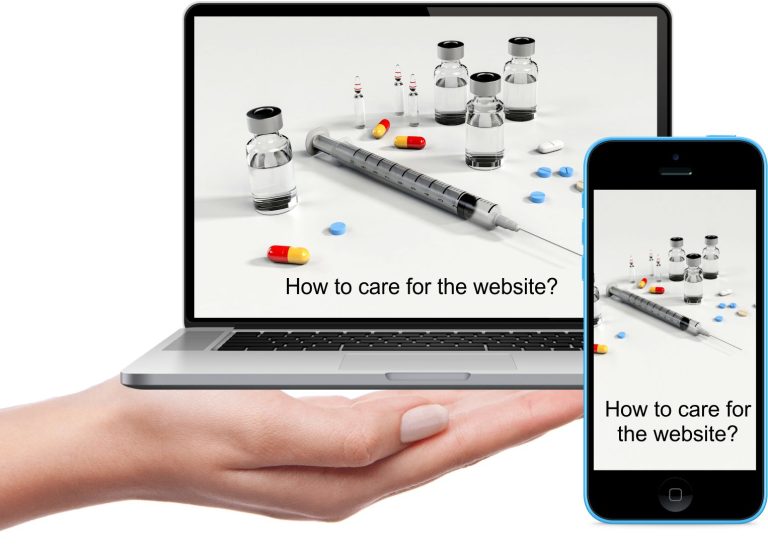Affordable small business website care plans
$ 25, $ 40, $60

As a website owner, it’s crucial to understand the importance of website care and maintenance. Your online presence is a significant component of your business.
Neglecting your website’s upkeep can have serious consequences.
- Broken links,
- outdated information,
- technical issues,
- hacker attacks,
- slowness,
- rank decline
can all impact performance and reputation. Regular care is necessary to ensure that your site functions optimally and provides the best possible user experience.
Don’t let these issues get in the way of your success – take the time to set up a care plan for your website. You’ll see the benefits, such as improved traffic, increased engagement, and a solid online presence.
Table of content
What is a Small Business Website Care Plan?

A small business website care plan ensures updated content, a secure environment, and user-friendliness while meeting the business’s goals. It is an essential tool for small businesses.
A website care plan typically consists of several tasks, such as:
- monitoring
- security
- performance optimization
- content management
- checking broken links
- regular backend updates
- Monitoring is keeping track of performance and uptime.
- Security of the website and visitors’ data – regular checks that they are not vulnerable to malicious activities or attacks.
- Performance and speed optimization ensure that web pages load quickly and are accessible and beautiful on all screens and browsers.
- Content management guarantees up-to-date content, relevant for visitors, and organized in an easy-to-find and engaging way.
- Broken links check – broken links point nowhere and usually return a 404 error (“Nothing here” page). They are harmful. Regular checkups are a must. You can check if you have broken links with an Ahrefs free broken links checker.
- Backend updates protect your website from hacker attacks and crashes. All plugins, themes, add-ons, and programs should be regularly updated.
- Traffic and conversions monitoring and reports are essential in achieving your goals. Google algorithms and your competitors’ sites influence your success. You should always know how they affect SERP positions and conversion rates.
Google Search Console is the most helpful free tool to monitor if your website is updated, fast, user-friendly, responsive, and secure.
Google Analytics provides invaluable data about traffic, conversions, the success of individual web pages, and much more.
Why every small business needs a website care plan?
Your website reflects the small business you ran and should achieve your goals. If not maintained properly and regularly, your brand and online reputation might be damaged. Traffic and conversions will decrease, and the business goals will not be met.

With the customized care plan:
- visitors’ data will remain secure,
- the content will always be valuable and relevant
- the website will be responsive, fast, and user-friendly.
This will make visitors more likely to engage, increasing conversions and achieving your goals.
Overall, it would be best if you had a care plan to ensure the optimal functioning of the website. Since that requires multiple, often repetitive tasks, the plan helps consistent execution without overlooking any necessary step.
How do you benefit from the custom website care plan?

There are six significant benefits when you are on the small business website care plan. The plan (and consistent execution) monitors and ensures your website’s:
- Speed
- Security
- Functionality and 99% uptime
- Content relevancy
- Traffic volume
- Conversion rates
If you want to learn more about each of the seven listed matrics, please keep reading. If not, jump to the “How to find a website care expert” section.
1. How do care plans influence website SPEED?
Website speed, also known as page load time, refers to the time it takes for web pages and posts to load and become usable for a user.
This is an important SEO metric because slow-loading times negatively impact user experience, resulting in high bounce rates, low engagement, and conversion rates.
Website care plans involve regular updates and optimizations to keep it running smoothly.

Some of the specific tasks included in website care plans that directly impact speed are:
Server optimization: Your hosting server can significantly impact page loading time. A website care plan includes regular server optimizations, thus ensuring that the website runs on the best possible infrastructure.
Code optimization: The code is one of the major factors in page load time. A website care plan includes regular code optimizations, such as minifying CSS and JavaScript files, reducing the size of the files, and improving site speed.
Content optimization: The size and quality of images and videos can also affect page load time. A website care plan includes regular content optimization (compressing images and videos, reducing DOM size, lazy-load, deffer rendering, etc.), thus improving load times.
Plugin updates: WordPress websites heavily rely on plugins for specific functionalities. Plugins can slow down your site or even break it if not updated. A website care plan guarantees regular plugin updates.
2. How do care plans influence website SECURITY?
Website security is critical to protect sensitive information, such as user data and financial transactions, and to prevent malicious attacks, such as hacking and malware infections.
A website care plan that includes tasks to ensure security can help to minimize the risk of these threats.

Website security is critical to protect sensitive information, such as user data and financial transactions, and to prevent malicious attacks, such as hacking and malware infections.
A website care plan that includes tasks to ensure security can help to minimize the risk of these threats.
Some of the specific tasks that can help to ensure security are:
Software updates: Software updates often include security patches to fix vulnerabilities in the code. A website care plan may consist of regular software updates to ensure that your site runs the latest version with the latest security fixes.
Backup and recovery: Regular backups of files and databases can help recover from security breaches or other issues. A website care plan may include regular backups and a plan for recovery in case of an emergency.
Firewall configuration: A firewall is a network security system that monitors incoming and outgoing network traffic and allows or denies access based on a set of security rules. A website care plan may include configuring and maintaining a firewall to protect the site from unauthorized access and other security threats.
Malware scanning and removal: Malware, or malicious software, can harm the website or steal sensitive information. A website care plan may include regular malware scanning and removal to ensure the website is free from malware infections.
SSL/TLS encryption: SSL (Secure Sockets Layer) and TLS (Transport Layer Security) are encryption protocols that secure the connection between a website and its users. A website care plan may include installing and maintaining an SSL/TLS certificate to encrypt website traffic and protect sensitive information.
User access control: User access control involves managing who has access to the website and what they can do. A website care plan may include implementing user access controls, such as password policies and two-factor authentication, to protect the website from unauthorized access.
A website care plan that includes tasks to ensure website security will minimize the risk of threats and hacker breaches.
3. How do care plans influence website FUNCTIONALITY?
Website functionality refers to the ability of a website to perform the tasks and provide the services it was designed to do, such as allowing users to navigate, search, view content, fill out forms, make purchases, and more.

The functionality is achieved through the interaction of various components, including:
Server-side scripts: These scripts run on your hosting’s server and are responsible for processing user requests and serving dynamic content, such as form submissions or database queries.
Client-side scripts: These scripts run in the user’s browser and are responsible for creating and controlling the users’ behavior interface, such as drop-down menus, sliders, and modal windows.
Database: A database stores information that the website needs to function, such as user accounts, blog posts, and product information.
API: An API (Application Programming Interface) allows different software systems to communicate with each other and exchange information (like weather APIs, calculators, converters, Google apps, etc.).
Content Delivery Network (CDN): A CDN is a network of servers that store and deliver content, such as images and videos, to users based on their location to improve website speed and performance.
An excellent small business website care plan includes monitoring all mentioned components, thus ensuring your website functions.
3. How do care plans affect CONTENT RELEVANCE & SEO?
Relevant content is a crucial factor affecting SEO (Search Engine Optimization) and ranking in SERPs (Search Engine Results Pages).
Search engines use algorithms to determine the relevance and quality of content, and relevant content is the primary factor for success.
A website care plan should include monitoring and reporting about:
Keywords for which the website ranks
- Competitors’ websites and ranking
- Metrics such as bouncing rate, responsive, and conversions
- Scroll depth for individual posts and pages
- Engagement rates
- Event counts
All metrics (provided by GA4 and GSC) will tell you if your website content is relevant, updated, engaging, and valued by search engines and visitors.
4. Care plans and website TRAFFIC

There are five types of website traffic based on how people arrive at your site:
- Organic (SEO): Visitors who arrive at a website after they type a keyword and click on your website link listed in SERP. This type of traffic is the most valuable as it is free, targeted, and relevant to the user’s search query.
- Social media: Visitors who arrive at your website after clicking on a link from a social media platform. This type of traffic is valuable as it can help increase brand exposure and reach a wider audience.
- Paid: Paid traffic refers to visitors who arrive at a website after clicking on a paid advertisement, such as a Google AdWords ad or a social media-promoted post. This type of traffic is the most expensive. Still, it can drastically increase brand exposure and the number of visitors with a high conversion potential (assuming your ads were created following the best practices).
- Direct: Visitors who type your website’s URL directly into their browser’s address bar or click on a bookmark to access the website. This type of traffic typically has a high level of engagement and conversions as the user clearly intends to visit the website.
- Referral: Referral traffic refers to visitors who arrive at a website after clicking on a link from another website. It builds credibility and Domain Authority.
An excellent small business website care plan must include monitoring and reporting on these metrics, thus helping you improve the website and increase your chances of achieving goals.
5. CONVERSIONS and GOAL ACHIEVEMENT with care plans

Many factors can impact a conversion rate, but three of the most important are:
User Experience (UX): A positive user experience is crucial for converting visitors into customers. This includes the site’s navigation, ease of finding information, page loading times (speed), variety of functionalities and options, and overall design.
Call-to-Action (CTA): A strong call-to-action is essential for guiding users toward the desired action, such as making a purchase or filling out a form. The CTA should be prominent, clear, incentivizing, and functional.
Trust and emotions: Trust is critical in converting visitors into customers. This includes secure payment options, clear privacy policies, and customer reviews. Emotions are in the background of each decision. A poorly functioning website, obsolete content, old design, and broken links will drastically lower users’ satisfaction, and they will leave your website.
Focusing on these three factors can improve conversion rate and turn more visitors into customers. Of course, other factors may be necessary for your specific goal, so testing and finding what works best, in the long run, is essential.
The role of the care plan in website conversions
Website care and maintenance directly influence all three factors, thus impacting the conversion rate:
Regular maintenance can improve UX by fixing broken links, technical issues, and navigation, ensuring fast load times and a great user experience. The small business website care plan should cover minifying code, compressing images, and implementing a content delivery network (CDN).
Good care plan ensures that your site’s CTAs are functioning properly and are prominently displayed. This can be achieved through techniques such as A/B testing to determine the best placement and design for your CTAs, and ensure that all buttons and forms are working correctly.
Maintenance and care should create a safe environment for website visitors. Techniques such as SSL certificate installation, regular software and plugins updates, and backups will establish the basis for building trust.
By regularly performing website maintenance, your site will function optimally, which will improve user experience, increase the effectiveness of CTAs, and establish trust with your users, all of which will positively impact conversion rate.
How to set up website care plan - general tips
There are six general steps each small business owner should follow when setting up the care plan for their website.

- Set goals: Determine what you want to achieve from your care plan, such as performance optimization or security improvements.
- Create a budget: Estimate how much care and maintenance services you need and how much each service will cost.
- Research website maintenance professionals: Compare maintenance professionals and their care plan services to ensure they are qualified to meet your needs.
- Create website care plan timeline: Establish a timeframe for website care activities, such as security checks, performance optimization, and content updates.
- Create maintenance checklists: Develop checklists to ensure care activities are completed regularly and accurately.
- Monitor website performance: Track performance periodically to ensure care activities achieve the desired goals.
IMPORTANT:
To save time, money, and energy, we suggest you perform the first three steps yourself and the next three with your website care and maintenance expert.
How to choose the right expert to set up and execute your website care plan

When you are looking to hire someone for website maintenance, you should ask eight important questions:
- What experience do you have working with website care plans? It is crucial to find out how experienced a website maintenance professional is in creating and implementing website care plans. Ask for examples of website care plans and discuss their experience in optimization, security, content management, and website analytics.
- What techniques do you use to optimize website performance? Performance optimization is an integral part of website care and maintenance. Find out what strategies the professional uses to improve performance, such as caching or speed improvements.
- How often do you perform website security checks? Keeping your website secure is essential for establishing trust. Ensure the care expert regularly performs security checks and protects your site from malicious attacks.
- How do you handle website content management? Content management is another critical part of the website care plan. Ask care specialists how they handle content updates, SEO optimization, and performance tracking.
- What website analytics solutions do you offer? Analytics track performance, page views, and visitor behavior. Ask your potential experts what analytics solutions they provide and how they can help you track performance.
- How often do you communicate website care plans and updates? Communication is vital with any of your team members. Find out how often you’ll get care updates, security analysis, and performance optimization results.
- Do you offer website support services? Support services might include troubleshooting, training, improvement recommendation, digital marketing advice, SEO, and backup services. Ask your future care specialist what support services they offer and how they can help if your website falls or encounters an issue.
- How much do you charge for website care and maintenance services? Ask the specialist for an itemized list of services, optimization techniques, and types of support they offer. Make sure to find out how much each service will cost.
Based on the answers and your common sense, you’ll be able to choose the right person for the job. Good luck.
We provide
- website design,
- eCommerce services,
- content writing,
- SEO optimization,
- small business care plans,
- consultations,
- trainings, and
- digital marketing services.
Please, check all our prices for listed services.
Prices of small business website care plans
$ 25

Plugins update
Theme update
WordPress newest version
SEO audit
One additional question answered
Delivery time: 2 days
$ 25
$ 40

Plugins update
Theme update
WordPress newest version
SEO audit
Two additional questions answered
Website backup
Delivery time: 3 days
$ 40
$ 60

Plugins update
Theme update
WordPress newest version
SEO audit
Five additional questions answered
Website backup
Speed improvement
Live 15-minute consultation
Delivery time: 4 days
$ 60
What happens when you choose a care plan
Whichever small business website care plan you choose, you will be redirected to the Fiverr platform for the purchase.
Why?
Fiverr is one of the two best freelance platforms. Your money will be fully protected there. You will not pay until you approve the delivery.
Don’t worry. Your website is in good hands. Please, check what other clients say about my work, or explore my previous work.
“I believe you’ll be convinced that I’m the perfect choice for the care and maintenance of your WordPress website.“
Natasa Mezej, CEO of WebsiteDesign Promise
